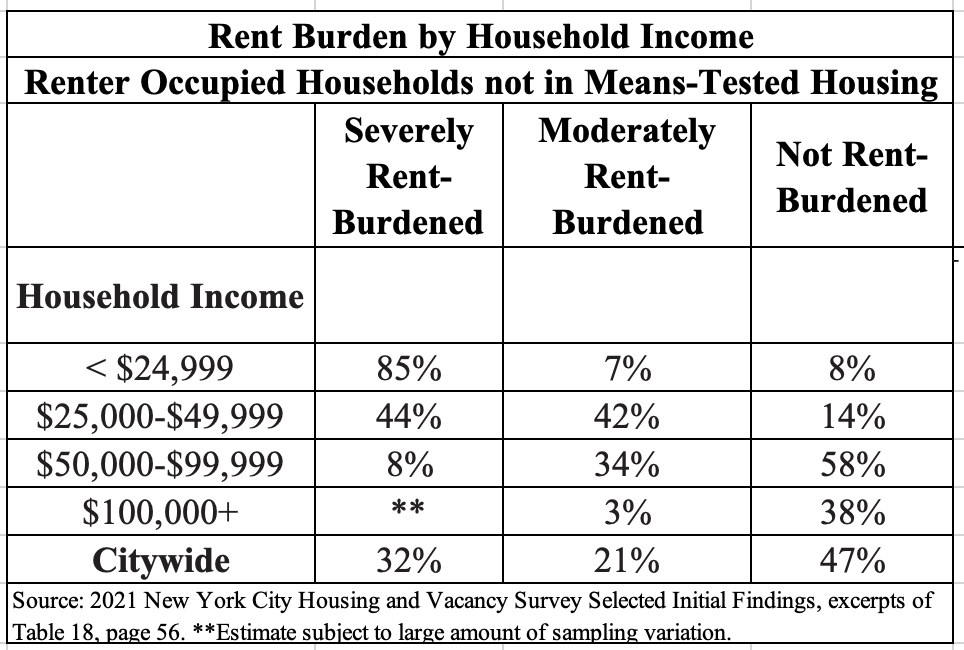
Housing in view (photograph: Governor’s Office)
It is easy to focus on New York City suitable when considering about the very affordable housing crisis. Initial results from the city’s triennial Housing and Vacancy Study, for example, show that 32% of all town renters not living in usually means-examined housing are seriously lease-burdened, this means having to pay extra than 50% of household profits for hire. It is 85% for households with money of much less than $25,000.

But, as New York Town Mayor Eric Adams prepares to launch his housing strategy – constructing on an define of proposed citywide zoning amendments he lately offered and other features his appointees have offered – we cannot go on to overlook the regional dimension to that crisis.
A lot more than 50 yrs back, the Regional Prepare Affiliation issued a report on housing alternatives in the New York Metropolis location, noting in 1969 that there was “growing apartheid” and a “severe limitation” in the suburbs on housing accessible to customers of minority groups. The report even more referenced the simple fact that there was disproportionately minimal inexpensive housing in the suburbs and that the expanding apartheid process “placed a serious and unfair stress on area governments [most notably New York City] which are still left with inordinate expenses ensuing from poverty.”
Rapidly-ahead to the current. In accordance to 2020 Census details, there are nonetheless in Westchester at minimum 16 cities and villages that have Black populations of significantly less than 3%. Along with the racial segregation, the disproportionate charges borne by New York Town as in contrast with its neighbors in respect to giving both equally affordable housing and social expert services remains as very well.
Utilizing 2020 five-calendar year American Local community Study facts compiled by Social Explorer, I identified that only 13.1% of the mixed homes in Westchester, Nassau, and Suffolk had family money of fewer than $30,000 by comparison, the per cent of New York Town households with residence money of a lot less than $30,000 was 26.1%.
In other phrases, the percentage of New York Town homes described as “extremely very low income” is double that of its suburban counterparts. (At the other stop of the spectrum, the share of suburban households with house income greater than $150,000 was 34.7%, substantially larger than the 20.1% of New York Metropolis homes that satisfied that criterion.)
So for all the concepts about what to do about affordability in just New York Town – which includes some modern types of my personal – it is critical not to forget about the critical function that New York’s suburbs are meant to be taking part in in supplying a truthful share of regional very affordable housing want.
Irrespective of their performing or else, New York City’s suburbs are not over and above the arrive at of point out law (which has extended required that each municipality strategy for its share of regional housing need). They are not supposed to be over and above the achieve of federal law, possibly. The Good Housing Act makes exclusionary zoning – like individuals suburban zoning codes that preclude the setting up of many-family members, blended-earnings housing – unlawful.
But these suburbs have, for decades, defied state and federal legislation and unsuccessful to establish significantly housing. From 2010 to 2020, for illustration, the Regional Approach Association calculates that Nassau and Suffolk Counties had fewer than 10 creating permits issued for every 1,000 citizens, and that Westchester clocked in at only 13.5. Manhattan housing begins for each 1,000 people – insufficient even now – had been a a lot increased 30.1.
1 noteworthy current illustration of the lively suburban resistance to constructing inexpensive housing is identified in the fate of the landmark housing desegregation consent decree that the Anti-Discrimination Middle received in opposition to Westchester in a case brought under the federal Bogus Promises Act.
The consent decree entered in the circumstance had, according to a brief filed by quite a few fair housing businesses, “provided extra prospect to impact considerable structural modify in hyper-segregated household housing designs than any other authorized continuing in the very last 25 several years.” Eventually, however, the decree experienced to be enforced by the federal governing administration and its displays, who were being unprepared to do so. They snatched defeat from the jaws of victory by failing to have the political will to get over the county’s resistance.
Even additional recently, New York Governor Kathy Hochul proposed early this year what she explained as “sweeping plans” to address the housing affordability disaster, like zoning alterations to make it possible for accent dwelling models in one-family members neighborhoods and to override nearby restrictions on multi-relatives, transit-oriented growth. These zoning initiatives swiftly ran into intensive suburban opposition, and had been dropped from Hochul’s spending plan proposal.
New York’s Department of Town Arranging would show up to understand at the very least on some ranges that the city’s housing needs exist in just a regional context, but the city’s management has in no way finished additional than have interaction in a “pretty, please” strategy to seeking regional fairness (to be honest, it is not even obvious no matter if city management has long gone as significantly as “pretty, please”). The failure of New York City’s suburban neighbors to establish their honest share of cost-effective housing not only hurts their have residents, that failure contributes drastically to New York City’s very affordable housing disaster as nicely. And the failure of the town to push its neighbors to do additional has been a grave mistake.
The town should really open up its eyes, exert actual political will, and be ready to use all the tools it has readily available – like point out and federal legal instruments that I am confident would be thriving – to deliver affordable-housing “fair share” to the metropolitan area.
***
Craig Gurian is government director of the Anti-Discrimination Heart, centered in New York Town. On Twitter @antibiaslaw.
***
Have an op-ed notion or submission for Gotham Gazette? Electronic mail This email tackle is getting shielded from spambots. You want JavaScript enabled to view it.
